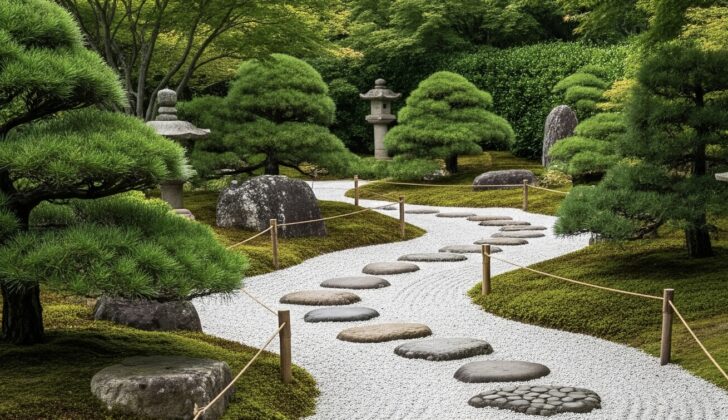In our busy world, walking is often just a means of getting from one place to another. But in Japan, walking is more than a form of transportation—it’s a deeply rooted cultural practice that promotes mindfulness, balance, and health. Japanese walking, known for its slow, deliberate, and graceful style, is gaining attention worldwide for its physical and mental benefits.
In this post, we’ll explore what Japanese walking is, where it comes from, how it works, and how you can easily add it to your daily routine for improved well-being.
What Is Japanese Walking?
Japanese walking refers to a traditional way of walking practiced in ancient Japan, particularly by samurai, monks, and the general population before the widespread adoption of Western footwear and posture. This style emphasizes:
-
Mindful movement
-
Postural alignment
-
Natural foot placement
-
Core strength and fluidity
It’s not about speed or distance. Instead, it focuses on walking with intention and awareness—something that can bring calm, energy, and longevity.
A Quick History
The roots of Japanese walking go back to the Edo period (1603–1868), when people would walk long distances daily. With no cars or public transportation, it was common to walk for miles. Samurai warriors, farmers, and townspeople developed a smooth, energy-saving style that allowed them to travel efficiently without injury or fatigue.
This way of walking is often described as “Namba Aruki,” where the same-side hand and foot move together, as opposed to the Western gait where the opposite limbs move together. This technique may seem unusual at first, but it creates a natural sway and minimizes twisting of the spine.
Health Benefits of Japanese Walking
Japanese walking isn’t just a cultural tradition—it’s also incredibly healthy. Here are some of the benefits:
1. Improved Posture
Because it emphasizes a tall spine, engaged core, and relaxed shoulders, Japanese walking can help correct slouching and reduce back or neck strain.
2. Joint Protection
This walking style uses the whole body fluidly, with less impact on the knees and hips. It’s gentle and ideal for people with joint concerns.
3. Mental Calm and Focus
The mindful rhythm of Japanese walking can have a meditative effect. It helps reduce anxiety and clear your mind—just like a moving meditation.
4. Better Balance and Core Strength
Because it involves a soft heel-to-toe step and the use of core muscles, Japanese walking strengthens your midsection and improves balance.
5. Boosted Energy Without Strain
Many people find this style less tiring because it uses momentum and body alignment to move more efficiently.
How to Practice Japanese Walking
You don’t need any special equipment to start Japanese walking—just awareness and practice. Here’s how to do it:
Step-by-Step Guide:
-
Start With Posture
-
Stand tall with feet hip-width apart.
-
Slightly bend your knees.
-
Relax your shoulders.
-
Tuck your chin slightly so your head is aligned over your spine.
-
-
Engage Your Core
-
Gently tighten your abdominal muscles.
-
Keep your pelvis neutral, not tilted forward or backward.
-
-
Arms and Legs in Harmony
-
Try the Namba Aruki style: Move your right hand and right foot forward together (instead of opposite limbs).
-
Keep your arms close to your sides with a soft, swinging motion.
-
-
Step Gently
-
Land on the ball of your foot and gently roll to the heel.
-
Keep your steps short and light—this reduces impact and saves energy.
-
-
Breathe Mindfully
-
Inhale through the nose and exhale through the mouth.
-
Let your breath match your step rhythm for a calming effect.
-
Where to Try It
You can try Japanese walking anywhere—on a sidewalk, in a park, at home, or even in a hallway. Here are some ideas to make it part of your routine:
-
During your morning or evening walk
-
On a quiet trail or nature path
-
As part of a stretching or yoga routine
-
While walking to work or school (even short distances count!)
Japanese Walking vs. Western Walking
| Feature | Japanese Walking | Western Walking |
|---|---|---|
| Arm/Leg Movement | Same side moves together (Namba) | Opposite sides move together |
| Step Size | Short, light steps | Longer, often heavier steps |
| Focus | Mindful, meditative | Often rushed or unconscious |
| Posture | Upright, relaxed shoulders | Varies, often slouched |
| Benefits | Calm, efficiency, joint relief | Cardio-focused, faster pace |
Final Thoughts
Japanese walking is more than just a way to move—it’s a gentle, thoughtful approach to health and presence. In just a few minutes a day, you can improve your posture, reduce stress, and connect more deeply with your body and surroundings.
Whether you’re recovering from injury, looking to relieve joint pain, or simply hoping to slow down and reconnect with yourself, this ancient walking style may be just the quiet transformation you need.
So next time you step outside, try walking the Japanese way—one mindful step at a time.












